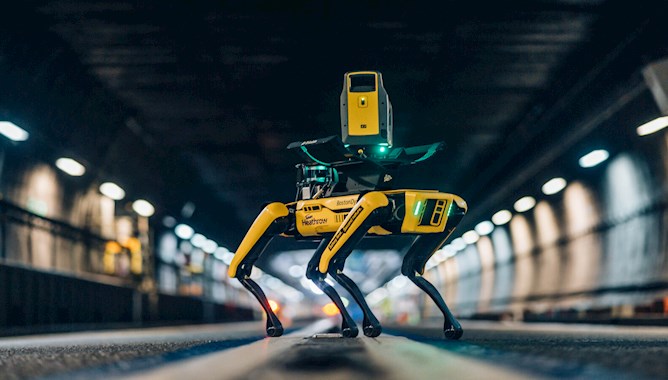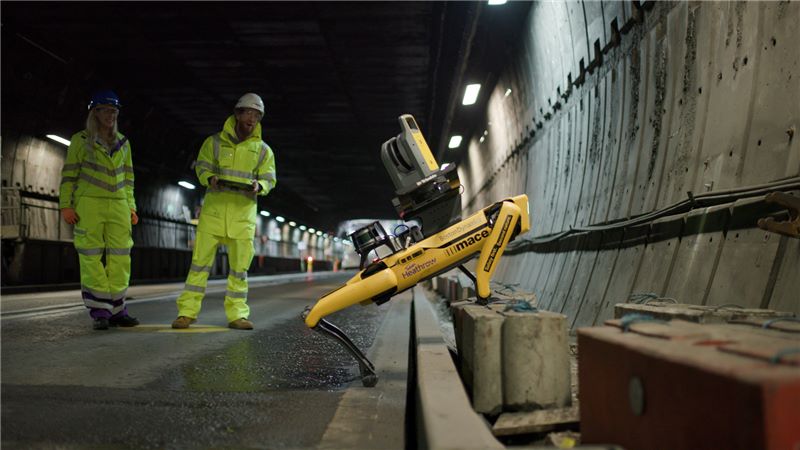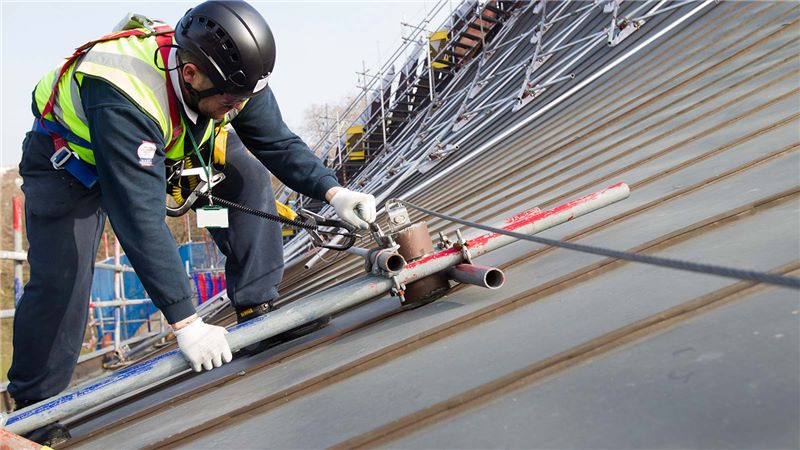'Dave': The robot dog
THE CHALLENGE
By its very nature, the built environment can sometimes mean unique hazards and challenging work environments. Of course, the safety of each and every person who steps foot on a project or site is paramount at all times - but it’s an element of the industry that can always be improved.
The merging of the digital and physical view of construction sites means our sector is already using both augmented and virtual reality technologies to save time, reduce errors, prevent rework and create a long-term return on investment.
And from the use of drones to scan more expansive structures to the automation of rebar and light gauge steel frame production, automation offers the potential to enhance productivity, efficiency and manufacturing flexibility throughout the built environment. But it’s through the world of robotics that we can truly reduce the risks to the workforce.
THE APPROACH
With the wellbeing of staff at the forefront of our thinking, Mace and Heathrow Airport have employed ‘Dave’, a robotic dog, in a bid to improve efficiency and safety on major construction projects.
Airports can often mean complicated working environments - particularly airside. Originally developed by Boston Dynamics for use in the military, the team are trialling the use of a four-legged robot, equipped with a Trimble X7 scanner, to provide 3D laser scans of a 1960’s cargo tunnel as it undergoes refurbishment.
Mace is leading on the refurbishment and updating of aging mechanical and electrical services, bringing the tunnel - which is used to transport luggage and cargo across the airport – in line with new regulations.
As part of the robot’s automation, operators are able to set up ‘missions’ within the device’s internal computer, allowing it to walk around without need of supervision, before returning to dock and upload captured data. Named 'Dave' by the project team, the robot dog allows the project team to safely retrieve data from the building site which is then used alongside 3D models and augmented reality to track accuracy and progress on the construction work.
And while this process limits risk, this up-to-date data can also be used to improve workflow and increase prefabrication offsite, speeding up the construction process overall.
Mace is one of the first construction firms to adopt this technology in the UK and, if the trial is deemed to be a success, will look to extend the approach across other major construction projects around the UK – driving improvements in safety and productivity across the industry.
Robots will never replace people in construction – but this pilot shows how they have the potential to drive greater efficiency, capture records digitally and improve safety and delivery.
We expect the use of this technology to be rapidly scaled up and include the automated fabrication of modular homes and building components off-site, robotic welding and material handling on building sites and robotic 3D printing of houses and customised structures.
Taking a data-led approach we must continually improve our risk management and reporting, training and activity management. Actively seeking out opportunities for improvement and building a learning culture keeps us moving forwards.













